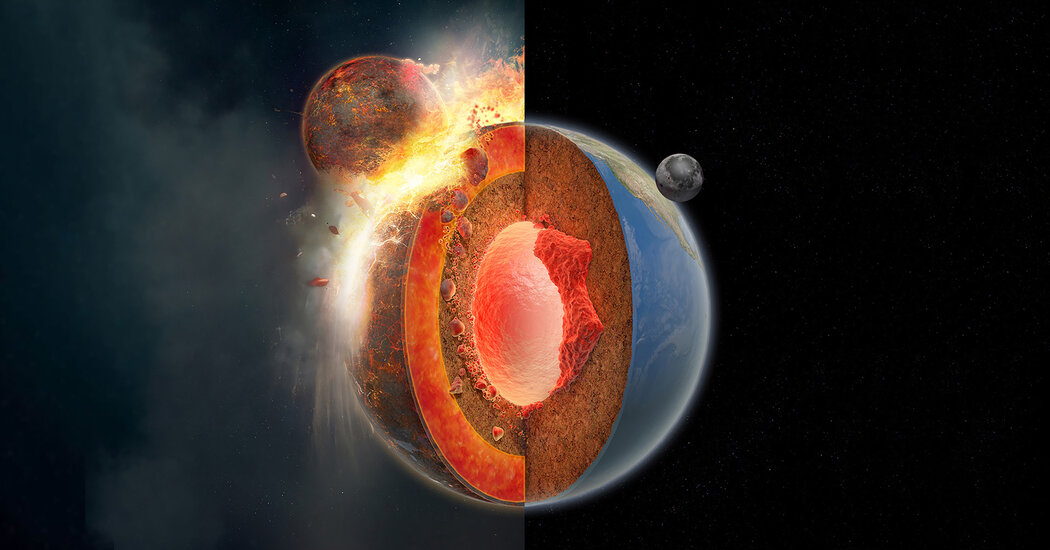Computer simulations suggest that a collision with another planetary object early in Earth’s history may have provided the heat to set off plate tectonics.
Some 4.5 billion years ago, many scientists say, Earth had a meetup with Theia, another planetary object the size of Mars. When the two worlds collided in a big whack, the thinking goes, debris shot into space, got locked into the orbit of the young, damaged Earth and led to the formation of our moon.
But the collision with Theia may have done more than that, according to a study published last month in the journal Geophysical Research Letters. The impact may have given rise to something else: plate tectonics, the engine that drives the motion of Earth’s giant continental and oceanic plates and causes earthquakes, volcanic eruptions and the eventual remaking of our planet’s surface about every 200 million years.
Earth scientists have long studied and debated the origin of plate tectonics, and other theories have been offered. Qian Yuan, a postdoctoral researcher at the California Institute of Technology and an author of the new paper, and his colleagues make the case for the Theia collision as the source of plate tectonics. They reason from computer simulations that the event produced the heat needed in Earth’s early days to get the process going.
Tectonics starts with superheated plumes of magma from close to Earth’s core rising and sitting beneath the planet’s plates. The plumes can weaken the crust, and lava can erupt and push aside overriding plates.
Driven by the erupting lava, plates scrape past and collide with each other, and they can also dive beneath other plates and into the planet’s interior in a process called subduction.
In earlier research, Dr. Yuan described continent-size “blobs” floating some 2,000 miles beneath Earth’s surface near the core. He and his team think those blobs are remnants of Theia that, delivered violently, created the heat needed to form the first tectonics-driving plumes. The giant blobs are believed to be connected to magma plumes, which means the blobs could be fueling plate tectonics.
